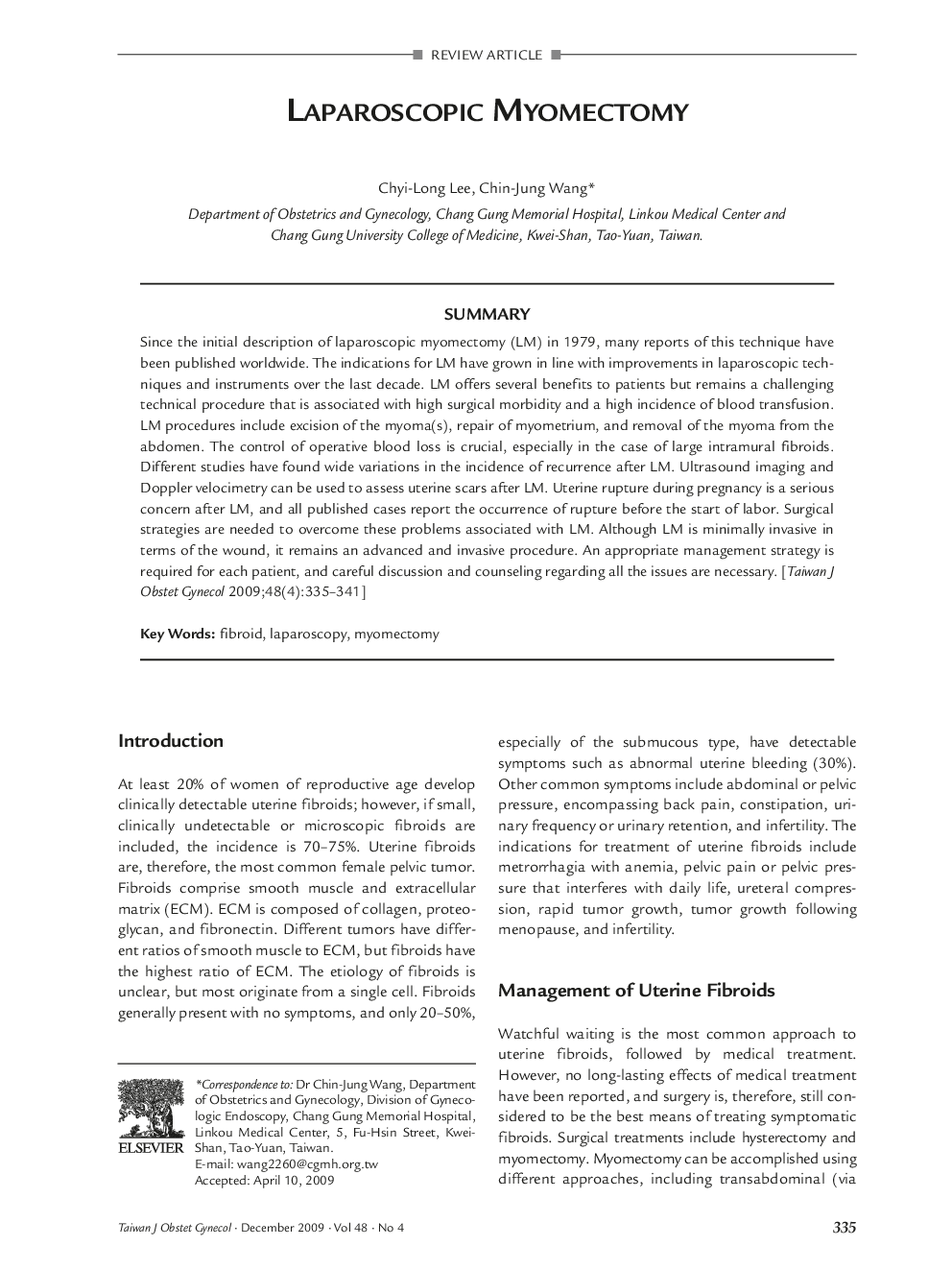| Article ID | Journal | Published Year | Pages | File Type |
|---|---|---|---|---|
| 3976170 | Taiwanese Journal of Obstetrics and Gynecology | 2009 | 7 Pages |
SummarySince the initial description of laparoscopic myomectomy (LM) in 1979, many reports of this technique have been published worldwide. The indications for LM have grown in line with improvements in laparoscopic techniques and instruments over the last decade. LM offers several benefits to patients but remains a challenging technical procedure that is associated with high surgical morbidity and a high incidence of blood transfusion. LM procedures include excision of the myoma(s), repair of myometrium, and removal of the myoma from the abdomen. The control of operative blood loss is crucial, especially in the case of large intramural fibroids. Different studies have found wide variations in the incidence of recurrence after LM. Ultrasound imaging and Doppler velocimetry can be used to assess uterine scars after LM. Uterine rupture during pregnancy is a serious concern after LM, and all published cases report the occurrence of rupture before the start of labor. Surgical strategies are needed to overcome these problems associated with LM. Although LM is minimally invasive in terms of the wound, it remains an advanced and invasive procedure. An appropriate management strategy is required for each patient, and careful discussion and counseling regarding all the issues are necessary.
